Casseroles are beloved for their versatility and convenience, often enjoyed as leftovers that make for quick and easy meals. However, the key to preserving a casserole’s texture and flavor lies in mastering “how to heat up casseroles in oven” effectively. Proper reheating methods help avoid the common pitfalls of overcooking or drying out the dish, ensuring it remains as delicious as when first prepared.
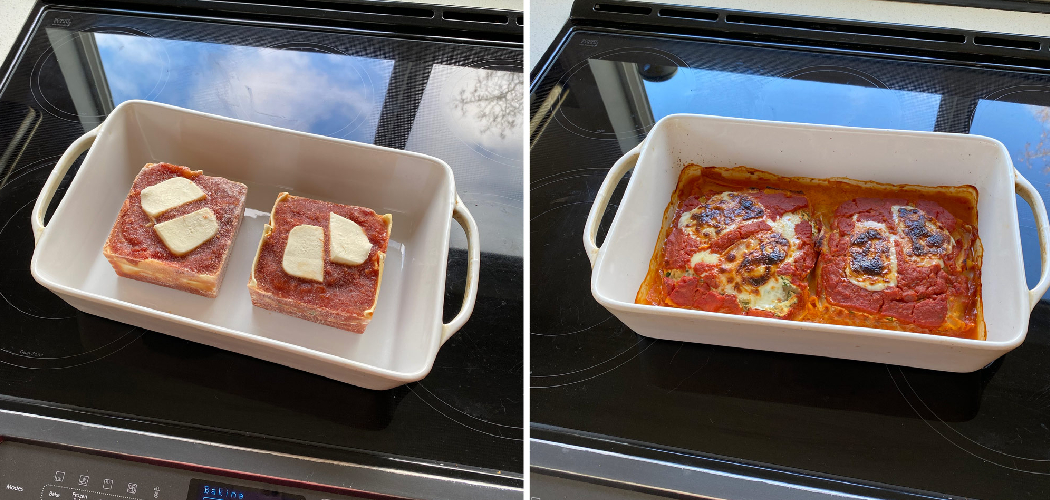
Different techniques are available for reheating casseroles, including stovetop, microwave, and oven methods. The oven stands out as one of the best options for ensuring even heating. It helps maintain not only the flavor but also the original texture of the dish, which is paramount for enjoying a casserole at its best. Emphasizing the correct approach to oven reheating can elevate your leftover casserole experience, making each bite just as satisfying as the first serving.
Assessing the Type of Casserole
Understanding the Ingredients
Understanding the ingredients in your casserole is crucial in determining the best reheating method. Different types of casseroles—whether pasta-based, vegetable, or protein-rich—will respond uniquely to heat. For instance, a pasta-based casserole may require more moisture when reheating to prevent dryness, often needing a splash of broth or water. On the other hand, casseroles rich in vegetables might benefit from higher temperatures to avoid fogginess, allowing the vegetables to retain some crispness.
Protein-rich casseroles, especially those containing delicate proteins like seafood or poultry, demand a gentler approach as these ingredients can become tough and overcooked at high temperatures. Dairy-rich casseroles like those with creamy sauces or cheese layers should also be handled with care. The risk with such casseroles is that the dairy can separate or scorch if heated too aggressively, thus requiring a lower temperature and even heat distribution to maintain their rich, creamy consistency.

Frozen vs. Refrigerated Casseroles
The storage method of your casserole— whether frozen or refrigerated—also significantly impacts the reheating process. Refrigerated casseroles, having merely been cooled, are typically faster to reheat and can often be directly placed in a preheated oven. Conversely, frozen casseroles demand more preparation and time. It’s important to differentiate these two conditions, as an error can lead to unevenly heated meals.
Frozen casseroles generally require a longer reheating time and sometimes benefit from being partially thawed overnight in the refrigerator prior to reheating. This helps balance the internal and external temperatures, reducing overall reheating time and enhancing even heating. Thawing improves texture and minimizes the risk of overcooking outer layers while the center remains cold. Keeping these factors in mind ensures your casserole is evenly warmed, preserving the delectable flavors and textures reminiscent of the original dish.
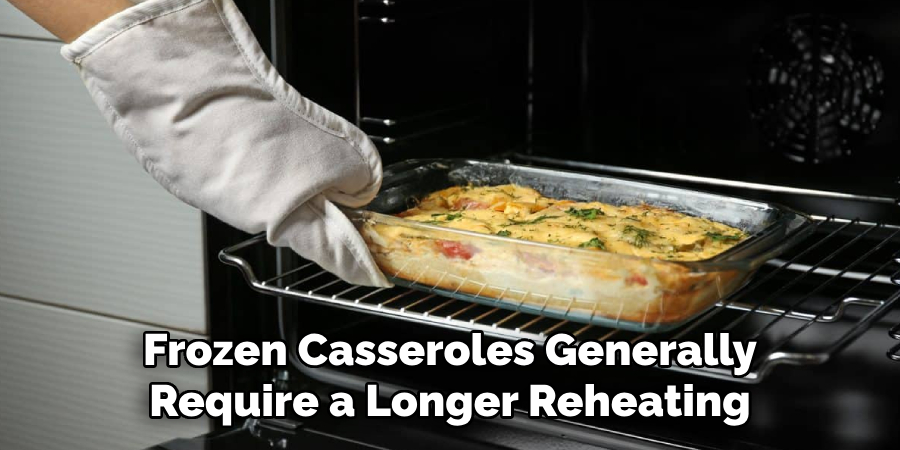
Prepping the Casserole for Reheating
Covering the Casserole
Properly preparing your casserole for reheating is crucial to ensure the dish retains its moisture and flavor. Covering the casserole with aluminum foil before placing it in the oven effectively prevents the top from over-browning or drying out. This creates a seal that traps steam, keeping the internal moisture intact.
For casseroles with a topping that you wish to crisp up—such as those with breadcrumbs or cheese—remove the foil covering during the last few minutes of reheating. This lets you achieve a lightly golden and crispy finish without compromising the casserole’s moisture balance.
Adding Moisture (Optional)
Some casseroles, particularly those with starch components like pasta, rice, or potatoes, may require additional moisture to prevent dryness during reheating. Adding a small amount of liquid, such as broth, milk, or water, can help achieve this. To incorporate the liquid effectively, gently stir before placing the dish in the oven. This ensures the added moisture is evenly distributed throughout the casserole, promoting a uniform texture.
Carefully assess the amount needed, as too much liquid can alter the consistency and flavor of your dish. With these steps, your reheated casserole maintains its desired tenderness and taste, closely resembling its fresh-out-of-the-oven glory. Taking the time to adequately prepare your casserole for reheating saves treasured leftovers from drying out and enhances the overall dining experience, making each bite as delightful as the first time it was served.
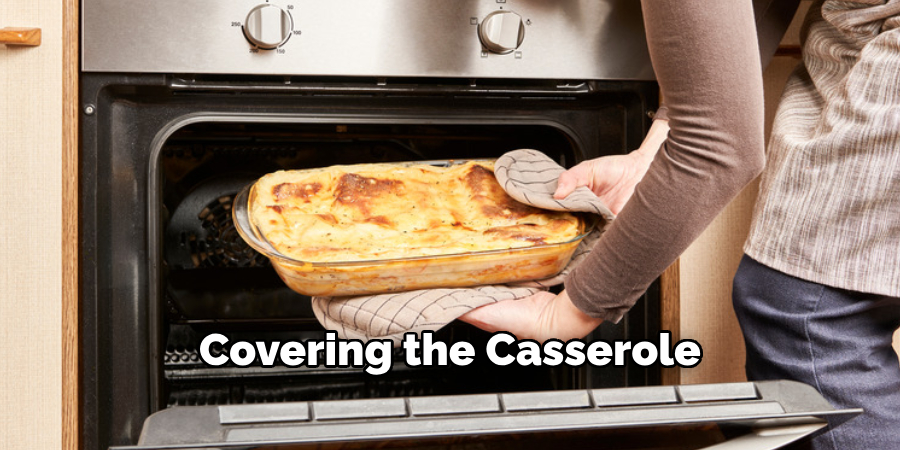
How to Heat up Casseroles in Oven: Oven Reheating Temperatures and Times
For Refrigerated Casseroles
Preheating the Oven
When reheating refrigerated casseroles, setting the oven to a standard temperature of 350°F (175°C) is recommended. This moderate temperature ensures that the casserole heats evenly all the way through without risking overcooking or drying out. Always preheat the oven before placing the casserole inside; this preparatory step is crucial for consistent heating and optimal results.
Reheating Time
The time required to reheat a refrigerated casserole can vary based on its size and thickness. Generally, 20-30 minutes is sufficient to warm the casserole evenly without impacting its texture or flavor. To check for doneness, it’s best to insert a food thermometer into the center of the casserole. For food safety, the internal temperature should reach 165°F (74°C). Achieving this temperature ensures that the casserole is heated thoroughly while also maintaining its taste and quality.
Uncovering the Casserole
Uncovering the casserole can be beneficial toward the end of the reheating process, particularly during the last 5-10 minutes. This allows the top layer or toppings, such as breadcrumbs or cheese, to brown and crisp up slightly, enhancing the dish’s texture and visual appeal. Balancing covered and uncovered reheating helps maintain moisture, providing a satisfying dining experience.
For Frozen Casseroles
Preheating the Oven
A slightly lower oven temperature is advised for casseroles being reheated from a frozen state. Set the oven to 325°F (160°C). This temperature promotes gradual, even heating, preventing the edges of the casserole from burning or drying out while the center warms through.
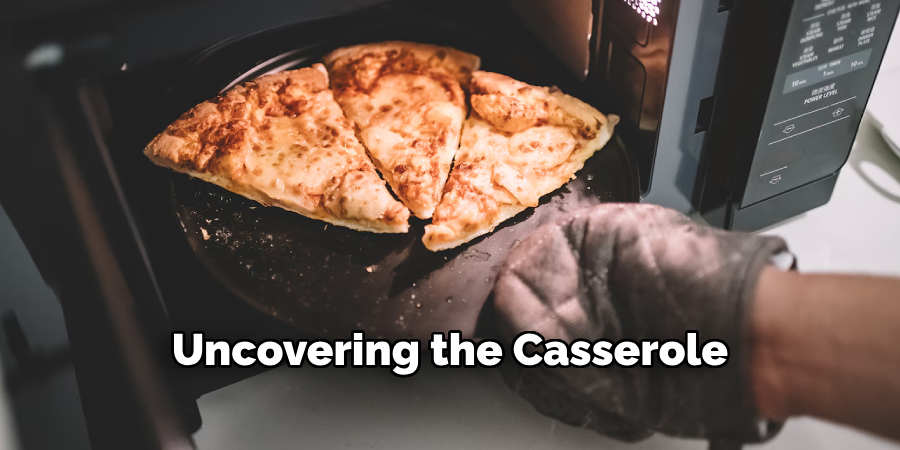
Reheating Time for Frozen Casseroles
Reheating a frozen casserole generally requires a more extended period—around 60-90 minutes—depending on the casserole’s size. Within 30-40 minutes of reheating, checking the casserole and stirring the contents gently if needed is prudent. Doing so helps distribute heat more uniformly across the dish, minimizing cold spots. If the edges appear to be drying out, consider adding a bit of liquid, like broth or water, to restore moisture levels until the casserole is fully reheated.
Thawing Option
To optimize the reheating process for frozen casseroles, consider thawing them overnight in the refrigerator. Thawing reduces the reheating time and contributes to better overall texture and flavor retention. Once the casserole is adequately thawed, follow the same reheating procedure as you would for refrigerated casseroles—baking at 350°F (175°C) for 20-30 minutes—ensuring the casserole is perfectly warmed and delicious.
By adhering to these guidelines, you can enjoy a delicious and perfectly heated casserole, no matter its initial storage condition.
Ensuring the Casserole is Fully Heated
Using a Food Thermometer
To guarantee your casserole is fully heated and safe to eat, using a food thermometer is an essential step. It ensures that the internal temperature of the casserole reaches 165°F (74°C), which is critical for eliminating any potential bacteria and assuring food safety.
For an accurate temperature reading, insert the thermometer into the center of the casserole, as this spot is typically the coldest and last to reach the desired temperature. By following this method, you can confidently serve your reheated dish, knowing it is both delicious and safe.
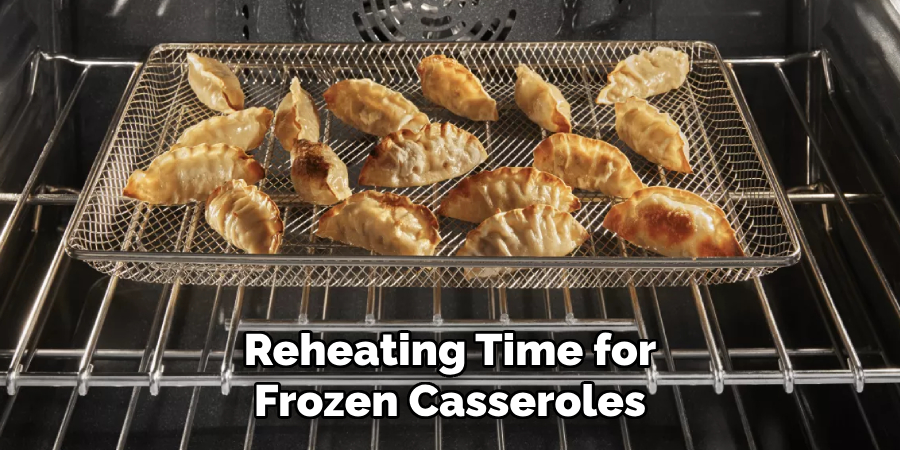
Stirring During Reheating (Optional)
In casseroles with mixed ingredients or layers, such as pasta dishes or shepherd’s pie, stirring halfway through the reheating process helps in distributing heat evenly across the entire dish. When stirring, especially with layered casseroles like lasagna, employ a gentle motion to avoid disrupting the layers. This targeted technique ensures that all parts of the casserole achieve the ideal temperature and consistency, maintaining the integrity of the dish’s texture and flavors while promoting a thorough and even reheating process.
Final Steps Before Serving
Letting the Casserole Rest
After removing the casserole from the oven, allowing it to rest for 5-10 minutes is a critical step that should not be overlooked. This resting period permits the residual heat to continue penetrating the dish, ensuring that any colder sections are brought up to the desired temperature. Moreover, the resting process allows the flavors within the casserole to harmonize, enhancing the overall taste profile of the dish.
Resting not only contributes to a more flavorful experience but also makes the casserole easier to serve, as it gives the ingredients time to settle and firm up slightly, preventing them from falling apart when portioning.
Adding Fresh Garnishes or Toppings (Optional)
Enhance the appeal of your reheated casserole by adding some fresh garnishes or toppings. A sprinkle of chopped herbs such as parsley or cilantro can introduce a burst of color and a hint of freshness.
For an added layer of flavor and a touch of richness, consider drizzling a bit of olive oil over the top. If you desire a cheesy finish, freshly grated cheese can be scattered on top, adding a creamy texture that beautifully complements the casserole. These optional additions brighten the dish visually and expand its flavor complexity, making each serving truly delightful.
Tips for Reheating Specific Types of Casseroles
Creamy Casseroles (e.g., Mac and Cheese, Alfredo)
To preserve the creamy texture and avoid a dry dish, incorporate a splash of milk or cream before reheating your creamy casseroles. This addition will help blend and restore the sauce’s smoothness, keeping the dish luscious and indulgent.
Vegetable Casseroles (e.g., Broccoli Cheese, Green Bean)
Reheating vegetables at a lower temperature, such as 325°F (160°C), or cutting down the reheating time can prevent overcooking and maintain their crunch. These adjustments preserve the veggies’ natural texture and flavor without turning them mushy.
Meat-Based Casseroles (e.g., Chicken Pot Pie, Lasagna)
Ensure the meat components reach an internal temperature of 165°F (74°C) for safety and taste. If the meat appears dry during reheating, consider adding a bit of broth or stock to moisten and enhance the flavors, promoting a succulent and satisfying dish.
Conclusion
Reheating casseroles correctly is essential in preserving their flavor and texture, ensuring they are as delightful as when first made. You can achieve a delicious, evenly reheated meal by adhering to recommended oven temperatures and times and incorporating moisture tips. Knowing how to heat up casseroles in oven allows you to enjoy the dish to its fullest potential, balancing between optimal taste and safety.
Casseroles make for excellent leftovers; when reheated properly, they can be just as tasty as the first serving. This makes them a convenient and satisfying choice for multiple meals, providing nourishment and indulgence with minimal effort. Embrace these guidelines to make the most of your casserole experience, savoring every bite of this hearty and comforting dish every time.
Professional Focus
Angela Ervin, a former interior designer turned blogger, specializes in kitchen design and renovations. Through her website, she blends her passion for cooking with design expertise, sharing practical and creative ideas. Known for balancing functionality and beauty, Angela’s insightful content has made her a trusted voice in home design and lifestyle.
About the Author
Angela Ervin, an experienced interior designer and blogger, combines her passion for kitchen renovations with storytelling. Living in Petersburg with her family, she enjoys cooking and testing her projects firsthand. Known for her humor and relatable style, Angela shares creative, functional design insights through her content, making her a trusted voice in home design.
Education History
University: Virginia Commonwealth University
Degree: Bachelor of Fine Arts (BFA) in Interior Design
- Angela’s education at VCU focused on mastering core interior design principles, including spatial planning, color theory, materials selection, and sustainable design practices.
- She gained hands-on experience through studio projects and collaborative design exercises, which honed her ability to create functional and aesthetically pleasing environments.
- Her coursework also emphasized problem-solving and practical applications of design, preparing her for real-world projects like her self-directed kitchen renovations.
- The program’s strong foundation in both technical skills and creative expression shaped Angela’s ability to seamlessly integrate form and function in her work.


